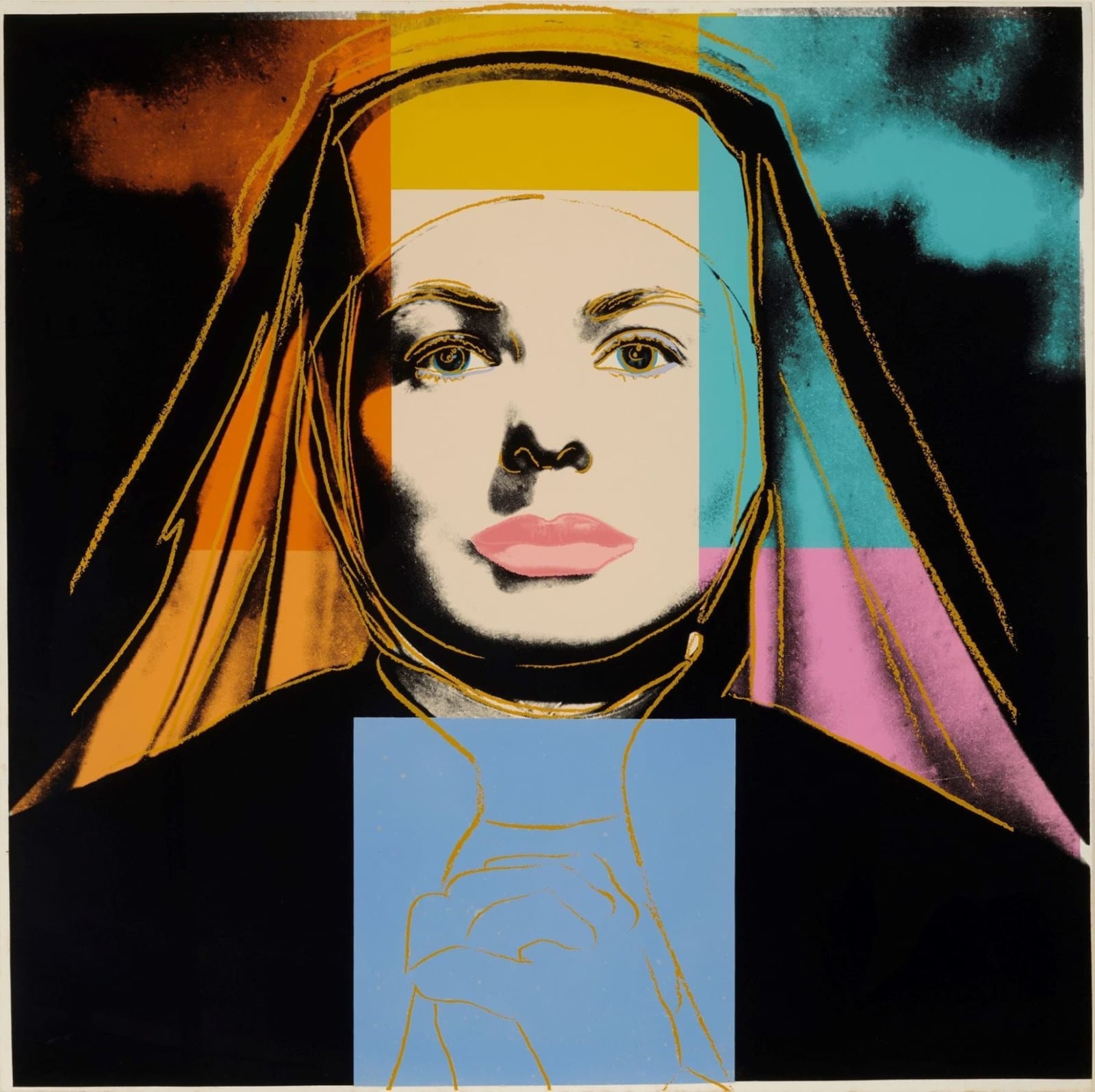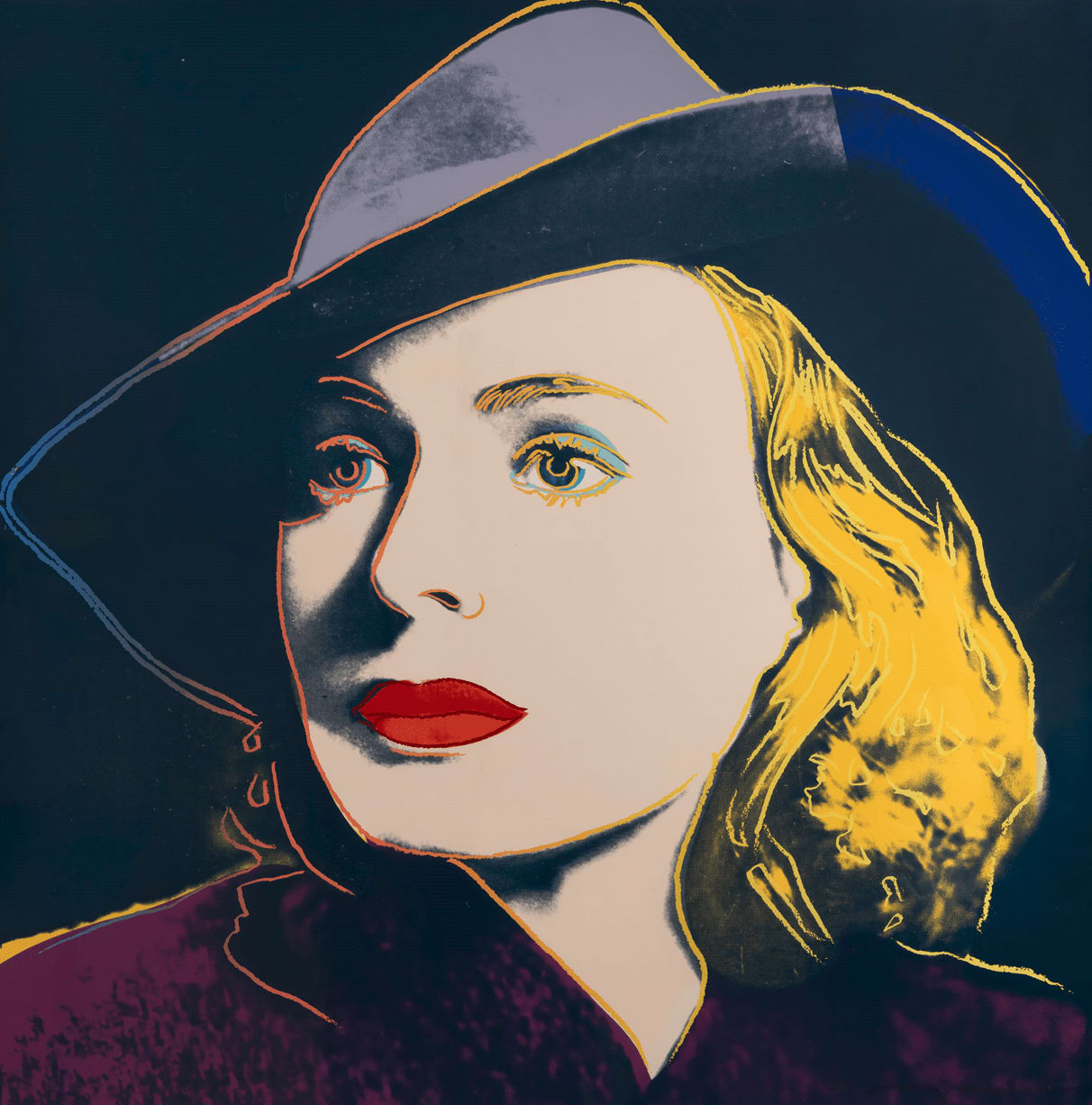
Andy Warhol and Ingrid Bergman: A Pop Art Tribute
Andy Warhol’s fascination with celebrity culture is at the core of his artistic inspiration, with his iconic portraits of Marilyn Monroe, Jackie Kennedy, and Liz Taylor becoming some of the most recognisable images of the 20th century. However, one of his lesser known, yet equally striking subjects was the legendary Swedish actress, Ingrid Bergman.
In the 1980s, Warhol produced a series of silkscreen portraits of Bergman, capturing her timeless beauty through his distinctive Pop Art aesthetic. This article explores the connection between Warhol and Bergman, the artistic significance of these portraits, and how they fit within Warhol’s broader exploration of fame, iconography, and the Hollywood dream.
Why Ingrid Bergman?
A Symbol of Classic Hollywood
By the time Warhol created the Ingrid Bergman series in 1983, Bergman was already an immortalised figure in cinema history. Known for her performances in Casablanca (1942), Notorious (1946), and Autumn Sonata (1978), she epitomised grace, intelligence, and emotional depth—qualities that set her apart from other Hollywood icons. Ingrid Bergman may seem like an unconventional muse for Warhol compared to Marilyn Monroe and Elizabeth Taylor. While undeniably beautiful, she carried a more serious demeanour, dedicating herself fully to her craft without indulging in the fame that accompanied it.
Warhol’s Obsession with Celebrity
Warhol was fascinated by celebrity culture, seeing stars as the modern equivalent of religious icons. His screen-printed portraits transformed actors and musicians into mass-produced images, mirroring their ubiquitous presence in the media frenzy of tabloids and advertisements. Bergman’s status as a revered actress made her a fitting subject for Warhol’s artistic exploration of fame.
The Ingrid Bergman Portfolio
In 1983, Warhol created a three-piece series of Ingrid Bergman portraits, each offering a unique interpretation of the actress:
Ingrid Bergman – The Nun

Inspired by Bergman’s role in The Bells of St. Mary’s (1945), this portrait captures her in a serene yet powerful pose. The religious symbolism aligns with Warhol’s frequent references to sainthood and iconography. Diametrically opposed to the demure and chaste nature of a religious figure, Warhol has sexualised Bergman’s character, enhancing her make-up and lips. This points to Ingrid transcending her character as a beauty icon.
Ingrid Bergman – With Hat

A more glamourous depiction of Bergman, this portrait presents her in classic Hollywood fashion, reinforcing her status as a cinema legend. The inspiration image was taken from a film still of Bergman’s most famous character Ilsa Lund in the film Casablanca from 1942, alongside the famed Humphrey Bogart. By titling the screenprint Ingrid Bergman with Hat, rather than the character’s name, Warhol blurs the lines between reality and artifice, and between the actress and her characters.
Ingrid Bergman – Herself

This final piece focuses on a naturalistic, close-up portrait of Bergman, highlighting her features without the dramatic stylisation seen in the other two. It reflects Warhol’s ability to transform simple headshots into striking pop art images. Named Herself, Warhol’s pays tribute to the true nature of the actress, as opposed to her costumed roles in the other prints.
Each piece was produced in limited edition screen prints, using vivid colours and contrasting shadows, signature elements of Warhol’s style.
How the Bergman Series Fits in Warhol’s Artistic Vision
Celebrity and Mass Production
Warhol’s silkscreen printing technique allowed for the mass reproduction of images, mirroring the way Hollywood produced and distributed star personas. Much like his famous Marilyn Monroe and Jackie Kennedy portraits, his Ingrid Bergman series deconstructs the idea of celebrity, presenting her as simultaneously a real person and an untouchable icon.
The Religious Subtext

Bergman’s role as a nun in The Bells of St. Mary’s aligns with Warhol’s lifelong interest in religious imagery. Throughout his career, he explored themes of Catholicism and sainthood, often blurring the lines between celebrity worship and traditional devotion. For example, Saint Apollonia is part of a portfolio of four screenprints executed by Warhol in 1984, of the Virgin Martyr Apollonia. The portfolio offers a rare insight into influence of the Catholic upbringing of the artist.
Collecting Andy Warhol’s Ingrid Bergman Prints
Today, Warhol’s Ingrid Bergman portraits remain highly sought-after by collectors. Their rarity, combined with the enduring appeal of both Warhol and Bergman, makes them valuable additions to any Pop Art collection.
At Andipa Editions, we specialise in Andy Warhol artworks, offering collectors a chance to own a piece of 20th-century pop culture history.
